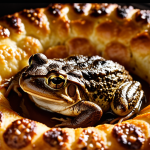Essential Ingredients for Bubble and Squeak
When preparing bubble and squeak, the choice of vegetables is fundamental to achieving its signature taste and texture. Traditionally, this dish relies heavily on vegetables for bubble and squeak such as cabbage, potatoes, and carrots. These ingredients provide a balance of creaminess and slight sweetness crucial to the flavor profile. Leftover roast vegetables like Brussels sprouts or parsnips also work wonderfully, adding depth and variety.
Besides vegetables, incorporating the right bubble and squeak ingredients for flavor is key. Onion and garlic can be gently fried before adding the vegetables to enhance the savory notes. A pinch of salt and pepper is essential for seasoning, while a knob of butter or a splash of oil aids in crisping the mixture during cooking.
This might interest you : What are the key techniques for making a mouthwatering toad in the hole?
For those wanting to experiment, seasonal variations could include using kale in winter or peas and spring onions in early spring. These alternatives not only keep the recipe fresh but also introduce new textures and tastes, making the dish more exciting and adaptable. Understanding these cooking basics helps ensure every bubble and squeak version remains delicious and satisfying.
Step-by-Step Method to Prepare Bubble and Squeak
Mastering how to make bubble and squeak begins with preparing the vegetables for bubble and squeak properly. Start by finely chopping or mashing your chosen vegetables, typically potatoes and cabbage, ensuring they are evenly sized for consistent cooking. Mixing these ingredients evenly is key to achieving the dish’s signature texture.
In the same genre : What are the secrets to making a flawless shepherd’s pie?
The cooking process involves heating a non-stick pan over medium heat, adding a knob of butter or oil. Once hot, spread the vegetable mixture into the pan, pressing it down gently. Cooking on moderate heat helps develop a golden crust without burning, a fundamental part of the step-by-step bubble and squeak method. The vegetables should be cooked for about 6 to 8 minutes on one side before flipping to crisp the other side similarly.
A vital cooking basic here is patience; high heat risks burning, while too low heat results in sogginess rather than the desired crisp. To perfect bubble and squeak, monitor color changes and smell—it should smell savory and slightly toasted. Following these steps will result in a dish with crispy edges, tender inside, and a well-balanced flavor, true to the classic bubble and squeak recipe.
Serving and Presentation Tips
Serving bubble and squeak well can elevate this humble dish into a satisfying meal for breakfast, lunch, or dinner. For breakfast, consider topping bubble and squeak with a perfectly fried egg; the runny yolk adds richness and balances the crispy vegetables for bubble and squeak. At lunch or dinner, serving it alongside smoked bacon or baked beans complements the dish’s savory notes while adding texture variety.
When thinking about presentation ideas, keep it simple yet inviting. Shape the bubble and squeak into neat rounds or squares before frying. This allows for even cooking and a pleasing visual when plated. Sprinkling freshly chopped parsley or chives over the top adds color and freshness, enhancing both appearance and taste.
For the best accompaniments, staples like mustard, brown sauce, or a dollop of sour cream work well. These condiments introduce tang or creaminess, contrasting the crispy bubble and squeak ingredients. Serving bubble and squeak on warmed plates maintains the ideal temperature, keeping the dish crispy and appetizing throughout the meal. Following these cooking basics for serving ensures your bubble and squeak is as delightful to the eyes as it is to the palate.
Creative Variations and Leftover Ideas
Exploring bubble and squeak variations offers a delicious way to reduce food waste while keeping meals exciting. One popular approach is using leftovers like roasted vegetables or cooked meats, which blend perfectly with the classic vegetables for bubble and squeak. Adding chopped herbs such as parsley, thyme, or rosemary can elevate the dish’s aroma and flavor, offering a fresh twist on traditional bubble and squeak ingredients.
Families often adapt recipes regionally or seasonally, introducing unique elements like mustard seeds or grated cheese into their creative bubble and squeak. This not only diversifies taste but also allows cooks to personalize the dish. For example, mixing leftover mashed sweet potatoes instead of regular potatoes adds sweetness and color to the mix, transforming the usual texture and taste.
Another practical idea for using leftovers is to fold finely diced bacon or sausage into the vegetable mix, providing a smoky, savory boost. These tweaks to the base vegetables ensure the dish remains satisfying and practical, making the most of what’s on hand.
By experimenting with bubble and squeak variations, you can enjoy a nutritious, sustainable meal that adapts wonderfully to your pantry’s contents and your culinary preferences.






